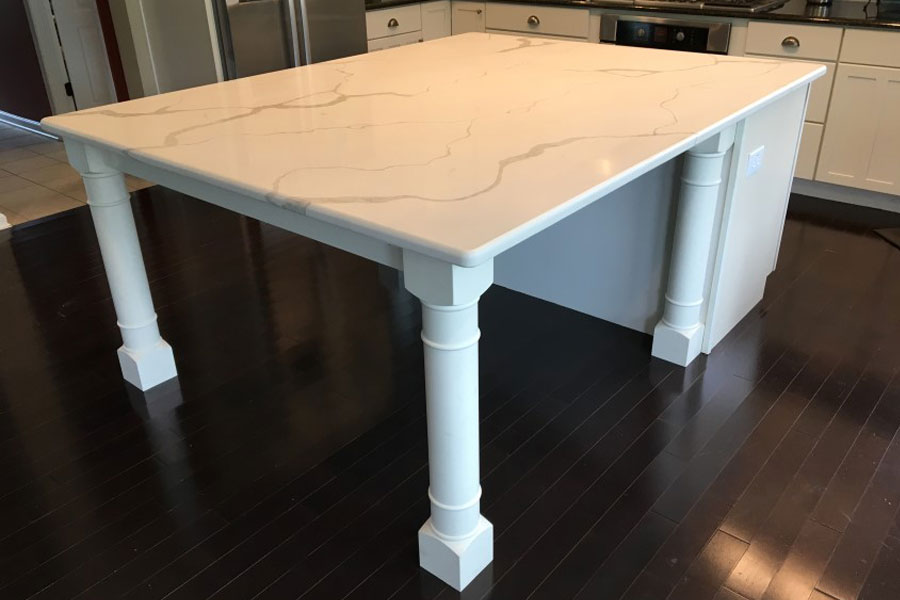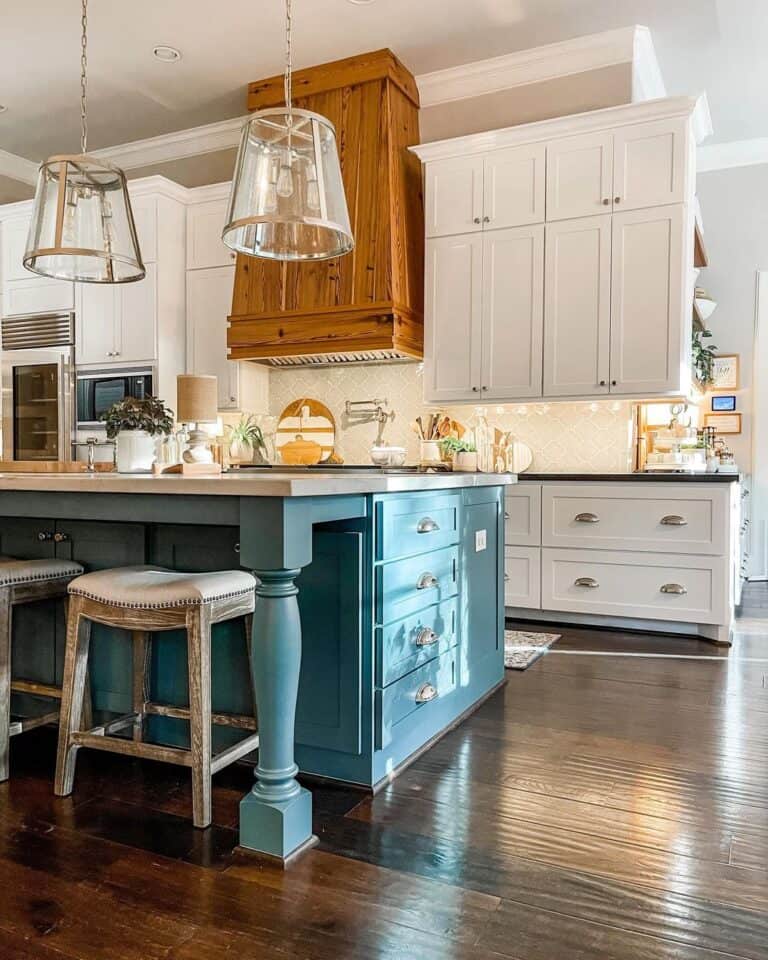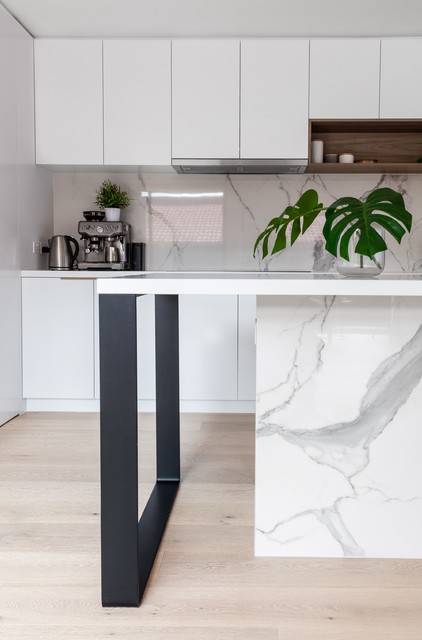Unique Kitchen Island Legs for a Personalized Kitchen Look
Unique Kitchen Island Legs for a Personalized Kitchen Look
Blog Article
A Guide to Selecting the Ideal Kitchen Island for Your Home
Picking the ideal kitchen island is a multi-faceted decision that can dramatically influence both the performance and aesthetic appeals of your home. Understanding your cooking area's spatial characteristics is the first action, making sure that the island fits flawlessly without disrupting the circulation. Past room factors to consider, identifying the key function of the island-- be it for meal prep work, dining, or extra storage space-- is vital. The choice of materials and finishes additionally plays an essential function in harmonizing the island with your kitchen's general style. As we check out these aspects even more, the subtleties of each decision will certainly end up being clear.
Evaluating Your Room
Prior to choosing a cooking area island, it is important to completely assess your area to make certain the addition will be both practical and cosmetically pleasing. Begin by determining the offered area, including the width, length, and elevation of the cooking area. Precise measurements are vital to stay clear of buying an island that bewilders the area or one that is disproportionately tiny.
Consider the existing layout and just how the island will certainly integrate with the current traffic circulation. A well-placed island needs to not obstruct paths or hinder access to necessary devices, such as the sink, oven, and fridge. Leave appropriate clearance room-- usually around 36 to 48 inches on all sides-- to permit for comfy movement and office performance.
Following, review the natural light and sightlines within your kitchen. An island that blocks a home window or disrupts visual cohesion can make the room feel dark and cramped. Think of how the island's positioning will influence lights and visibility, ensuring it boosts as opposed to detracts from the cooking area's atmosphere.
Figuring Out the Objective
Figuring out the purpose of your kitchen island is an essential action in ensuring it satisfies your details needs and preferences. Before diving into design or size factors to consider, it is important to clarify what main feature the island will offer in your cooking area. Will it be a central center for dish prep work, a casual eating area, or potentially an extra storage solution?
For those that delight in food preparation, incorporating devices such as a cooktop or sink may be needed. Additionally, enough counter space for cutting and blending, in addition to obtainable storage for cooking area tools and ingredients, can change the island into an efficient workstation. On the other hand, if the island is intended to offer or help with social interactions as a dining area, seating plans end up being extremely important. In this situation, guaranteeing enough legroom and surface for comfortable eating experiences is essential.

Selecting the Right Size
Selecting the ideal dimension for your kitchen area island is a balance of performance and area optimization. An ideal kitchen island must supply adequate office while making certain that motion around the kitchen area remains unimpeded. Begin by gauging your kitchen area; a minimal clearance of 36 to 42 inches around the island is required to enable comfy activity and ease of access.
The measurements of the island need to mirror its desired use. If the island will serve mostly as a prep location, a width of 24 to 36 inches could suffice. If it is to fit read the article seating, you need to consider a larger dimension, usually measuring at the very least 48 inches in size. Islands devoted to home appliances or sinks may call for additional area to house these features adequately.

Finally, guarantee that the island's size enhances the overall kitchen format, avoiding any kind of frustrating presence that could detract from the cooking area's visual and energy - kitchen island legs. Cautious planning and exact dimensions will assist you accomplish a harmonious and reliable cooking area atmosphere
Deciding On Materials and Finishes
After figuring out the proper dimension for your cooking area island, the following step includes choosing appropriate products and surfaces. The option of materials considerably influences both the aesthetic allure and functionality of your kitchen area island. Popular products for kitchen counters consist of butcher, quartz, and granite block, each offering unique advantages. Granite, understood for its toughness and ageless elegance, is extremely resistant to scrapes and warm. Quartz, an engineered stone, gives a non-porous surface area that stands up to microorganisms and spots. Butcher block, made from wood, includes a warm, rustic beauty and is ideal for cooking.
Along with the counter top, take into consideration the materials for the space station. Strong wood offers a timeless, durable appearance, while stainless steel offers a smooth, contemporary look and is simple to clean. Painted finishes can present a dash of color, with alternatives ranging from low-key pastels to strong, lively shades.
When choosing surfaces, guarantee wikipedia reference they enhance the overall kitchen area design. Matte finishes offer a modern feel, while glossy finishes can produce a sleek, high-end appearance. Pay focus to the resilience of surfaces, particularly in high-traffic areas, to keep the island's look in time. Choosing the appropriate products and finishes will improve both the performance and aesthetic charm of your kitchen island.
Including Functional Attributes
Integrating practical attributes into your kitchen island can dramatically enhance its utility and ease, changing it into a functional focal point of your cooking area. One necessary feature to take into consideration is added storage. Integrating cupboards, drawers, and open shelving can offer much-needed area for cookware, tools, and small devices, aiding to keep a clutter-free atmosphere.
One more beneficial addition is a built-in sink or cooktop, which can streamline dish preparation and clean-up procedures. A sink can facilitate tasks such as washing veggies and cleaning meals, while a cooktop can permit food preparation straight on the island, cultivating a much more interactive and social food preparation experience.
Take into consideration incorporating seating alternatives, especially if your kitchen area increases as an informal dining area. Bar feceses or built-in benches can transform the island right into a multifunctional room for meals, research, or informal events.
Lastly, incorporating electric outlets into your kitchen island can enhance its practicality. Outlets offer hassle-free my company access for little kitchen area appliances, charging stations for electronic devices, and extra illumination choices.
Final Thought

Prior to choosing a kitchen area island, it is essential to extensively examine your space to make certain the addition will certainly be both practical and cosmetically pleasing.Selecting the appropriate size for your cooking area island is a balance of functionality and area optimization. kitchen island legs. An ideal kitchen island should offer sufficient work space while making sure that movement around the kitchen area stays unimpeded.Including useful attributes right into your kitchen area island can dramatically enhance its energy and ease, changing it right into a versatile focal point of your cooking area.In final thought, choosing the optimal kitchen area island demands a thorough assessment of the available room, quality regarding its primary function, and careful consideration of the suitable size and materials
Report this page